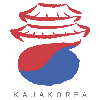Korean Lessons ᚛ Level 1 - My First Steps in Korean (Lessons 1 to 30) ᚛ Lesson 3 - Learn Hangul (part 3) - Combined vowels
Learn Hangul (part 3) - Combined vowels
Learning Hangeul
- Simple vowels
- Simple consonants
- Combined vowels
- Double consonants
- Final consonant combinations
List of Compound Vowels in Korean
In Korean, simple vowels can be combined to form compound vowels.
There are 11 compound vowels in Hangeul.
ㅐ (ㅏ + ㅣ)
The vowel ㅐ is pronounced [ae], like the "e" in "men".
ㅒ (ㅑ + ㅣ)
The vowel ㅒ is pronounced [yae], like the "ye" in "yesterday".
ㅔ (ㅓ + ㅣ)
The vowel ㅔ is pronounced [e], like the "e" in "egg".
ㅐ and ㅔ are not distinguished in modern pronunciation. They sound the same.
ㅖ (ㅕ + ㅣ)
The vowel ㅖ is pronounced [ye], like the "ye" in "yellow".
ㅒ and ㅖ are not distinguished in modern pronunciation. They sound the same.
ㅘ (ㅗ + ㅏ)
The vowel ㅘ is pronounced [wa], like the "wa" in "watch".
ㅙ (ㅗ + ㅐ)
The vowel ㅙ is pronounced [wae], like the "we" in "wet".
ㅚ (ㅗ + ㅣ)
The vowel ㅚ is pronounced [we], like the "we" in "wet".
ㅝ (ㅜ + ㅓ)
The vowel ㅝ is pronounced [wo], like the "wo" in "wonder".
ㅞ (ㅜ + ㅔ)
The vowel ㅞ is pronounced [we], like the "we" in "wet".
ㅙ, ㅚ and ㅞ have very similar pronunciations.
ㅟ (ㅜ + ㅣ)
The vowel ㅟ is pronounced [wi], like the "wi" in "wig".
ㅢ (ㅡ + ㅣ)
The vowel ㅢ has no exact equivalent in English. It starts with the sound ㅡ [eu] (produced with stretched lips rather than rounded) followed quickly by ㅣ [i].
Summary
|
Jamo |
Pronunciation |
|
ㅐ |
ae |
|
ㅒ |
yae |
|
ㅔ |
e |
|
ㅖ |
ye |
|
ㅘ |
wa |
|
ㅙ |
wae |
|
ㅚ |
oe / we |
|
ㅝ |
wo |
|
ㅞ |
we |
|
ㅟ |
wi |
|
ㅢ |
eui (with stretched lips) |
Writing Compound Vowels
The compound vowels ㅐ, ㅒ, ㅔ, and ㅖ are vertical vowels, so they are written to the right of the preceding consonant.
애,
얘,
에,
예.
The other compound vowels are both horizontal and vertical, meaning one part is placed below the consonant, and the other to the right.
와,
왜,
외,
워,
웨,
위,
의.
Learn more
Exercises
Learn more
You already know some vocabulary and sentence structures… But when you listen to Koreans speak, do you ever feel like something is missing, the meaning behind the words, the cultural nuance that makes the language truly come alive?
That’s completely normal. In Korean, proverbs and idiomatic expressions are essential to understanding how Koreans think and communicate. Without them, you can speak, but your language will feel flat and overly literal.
With 100 Korean Proverbs - Illustrated and Explained, you’ll understand not only what Koreans say, but why they say it, and what each expression reveals about their mindset and culture.
Learn more

